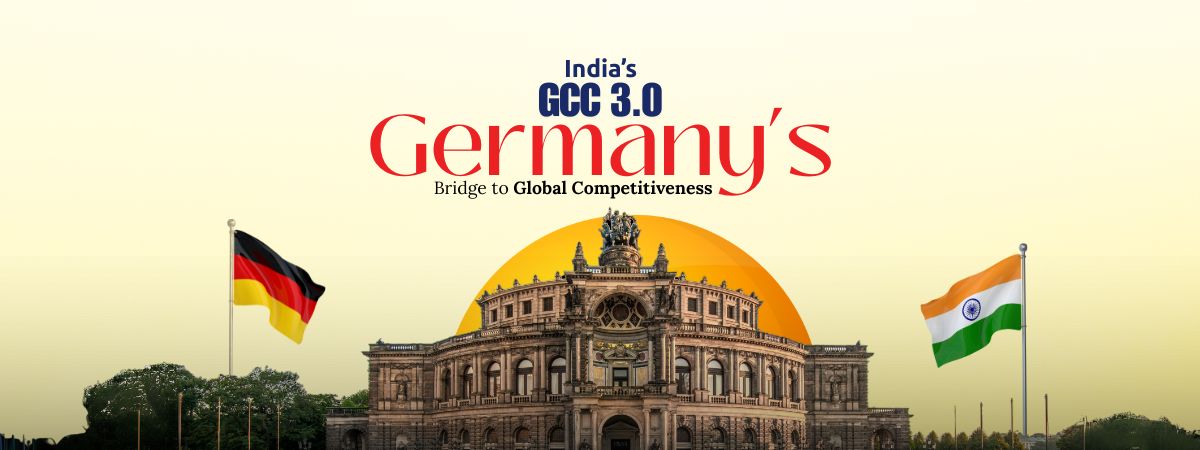In Brief
GCC 3.0: Germany’s Bridge to Global Competitiveness examines how Global Capability Centres (GCCs) in India can help German enterprises overcome structural constraints in 2025–2030. It defines the “GCC 3.0” model, compares cost, talent and innovation capacity between Germany and India, evaluates operating models (COPO, BOT, FLEXI, Digital Twin), and presents case studies and projections. The report offers a roadmap for firms seeking to shift R&D, product engineering and innovation functions to India with clarity on metrics, IP ownership, regulatory incentives and risk mitigation.
Overview
Germany faces stagnating GDP growth, rising energy and labour costs, and a shrinking skilled workforce. These headwinds are increasing the urgency for firms to find external competitive levers. India, by contrast, is emerging as a high‐potential GCC destination: large STEM graduate output, rising infrastructure, favourable policies and strong overlap in working hours for global operations.
Inductus’s Research Report introduces GCC 3.0: a model in which capability centres go beyond transactional delivery to assume ownership of product development, innovation, IP generation, and AI‐first engineering. It evaluates different operating models (COPO, BOT, FLEXI, and integration with Digital Twin) in terms of cost, time‐to-market, return on investment, compliance and control. It also assesses risk factors — IP, regulatory, cultural, and suggests mitigation. Finally, it offers practical guidance for decision-makers in German firms considering India as their GCC hub.
Key Highlights
Here are the high-impact findings and insights you can feature prominently:
- Germany’s GDP growth in 2025 is projected to hover around 0%, with trade and energy constraints tightening margins.
- India’s projected GDP growth for FY24-25 is ~6.5%, generating ~2.5 million STEM graduates annually — these graduates form the backbone of scalable, high-skill GCC functions.
- Labour cost advantage for high-skill and technology functions in India is in the range of 50-70% lower than in comparable German nodes.
- GCC 3.0 operating models (COPO, BOT, FLEXI, Digital Twin) show potential for 3-4× ROI when IP ownership, product lifecycle ownership and innovation capability are included.
- Case example (Siemens / STS India): the Indian GCC led on product/platform development (SiGreen, Circularity 360, etc.), owning architecture and IP.
- Strategic benefits for German enterprises include: narrowing innovation-to-market gaps; alleviating skills shortages; reducing total cost of ownership (TCO); improving agility in global product engineering.
- Key risks identified: IP compliance, transfer pricing, cultural alignment, regulatory change — with recommendations for structures and contracts to safeguard control.
- Near-term opportunities: launch pilot AI/ML CoEs in India, leverage Digital Twin for cross-site collaboration, and formalise IP capture and incentive negotiation before scaling.
GCC 3.0 Germany’s Bridge
to
Global Competitiveness
[real3dflipbook id=’2′]







